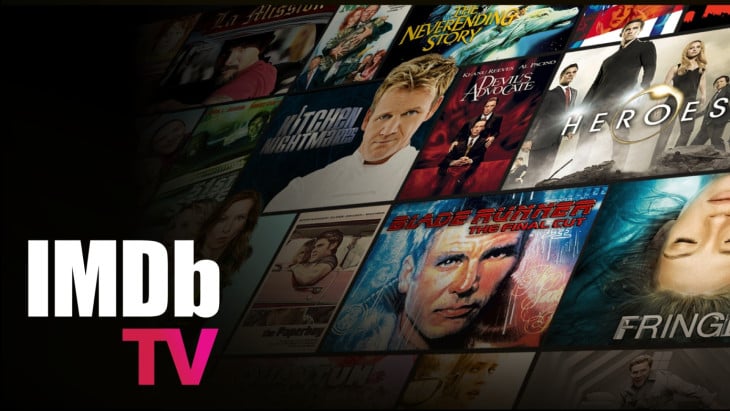Amongst all the big streaming services which have been announced and launched this year, Amazon’s ad-supported service IMDb TV (née Freedive) has been somewhat lost in the noise. But Amazon has been ramping up investment in IMDb TV, and plans to launch the product in European markets next year.
In this article Dan Larden, published by Video Ad News, managing partner, product and partnerships at Infectious Media, argues that IMDb TV’s UK launch could do for AVOD what Pokémon Go did for augmented reality, demonstrating its value to the mass market.
 In 2016 the brief but widespread craze for Pokémon Go saw grown adults chasing small, cute characters around public spaces. Heart-warming, although a little geeky, this did show the world what was possible with Augmented Reality (AR), giving a massive shot in the arm to companies developing this medium.
In 2016 the brief but widespread craze for Pokémon Go saw grown adults chasing small, cute characters around public spaces. Heart-warming, although a little geeky, this did show the world what was possible with Augmented Reality (AR), giving a massive shot in the arm to companies developing this medium.
With the European release of IMDb TV in 2020, ad-supported video on demand (AVOD) will see a similar lightbulb moment.
But if IMDb TV can start a revolution by providing free premium content online, there may be serious implications for traditional broadcasters.
IMDb TV is game changing
Currently, it’s difficult in the UK for advertisers to access scaled opportunities to buy video on demand programmatically. Broadcasters and other CTV apps have been slow to bring a fully-fledged programmatic offering to market.
This leaves YouTube, with its largely user-generated and sometimes worryingly non-brand-safe content, as the only scaled solution that supports the targeting, measurement and first party data use that advertisers expect from a programmatic solution.
With IMDb TV consumers will have the opportunity to watch premium TV and films, from big names such as Warner, Sony and MGM, for free on an ad supported model. Amazon announced in June they would launch the service in Europe, although it is still yet to announce the countries they will launch in and when. However, as most of the content is English language, a 2020 UK release is most likely.
What makes this an especially attractive opportunity for big brands is the ability to buy ads via the Amazon DSP. This brings with it the purchase intent data sought after by digital savvy advertisers, as well as the more traditional contextual and demographic targeting options used by TV buyers.
Traditional broadcasters are falling behind
In contrast, the traditional broadcaster’s slow adoption of programmatic, and especially their unwillingness to enable measurement, has been very frustrating for digital video buyers.
We are only now seeing the beginnings of a change, with some broadcasters and owners of premium content offering what digital traders have come to expect in terms of ease of access, planning, targeting and measurement.
Some, like Channel 4, are strengthening partnerships on the sell side to take advantage of the open market. This has allowed it to add in targeting and measurement options, whilst making inventory available across multiple DSPs.
However, others have taken the alternative route of locking access to their data and inventory within a specific platform, or giving preferential access to a specific platform. This more closed model, seen in the ITV-Amobee partnership and Roku’s purchase of DataXu, has to then convince buyers of the benefits of signing-up to, integrating and learning another completely new platform.
In contrast, Amazon and Google already have a plethora of unique data sources to convince brands and agencies to sign up to their respective stacks. So, YouTube and IMDb TV benefit from a pre-existing audience. It remains to be seen if access to ITV or Roku alone is enough to add another platform to the mix.
Amazon’s foray into live sports streaming
Whilst IMDb TV is looking like a springboard for the Amazon video advertising business, there are further opportunities for the company. Amazon purchased UK Premier League matches in 2019, and these are set to culminate in a lock-down of the line-up of games on Boxing Day. It has been reported that Amazon has enabled one-to-one measurement of these ads, meaning advertisers can see how subscribers react in terms of views of products, searches and purchases on Amazon’s retail site.
This is a massive warning to the sports broadcasters. Especially as it has already led to Amazon pricing its inventory at over double that of its rivals. So, whilst Sky Adsmart was groundbreaking in its release, it is still just a way to buy linear TV more effectively. Sky is, in reality, falling behind in making their digital assets available to programmatic buyers.
Together these moves, with the introduction of IMDb TV and live streaming of sports, are showing Amazon’s pace of innovation in the TV market. The broadcasters are going to have to move quickly to guard against what could be a major shift in ad-dollars to the tech giants in the near future.
Read the original article here

.jpg)



